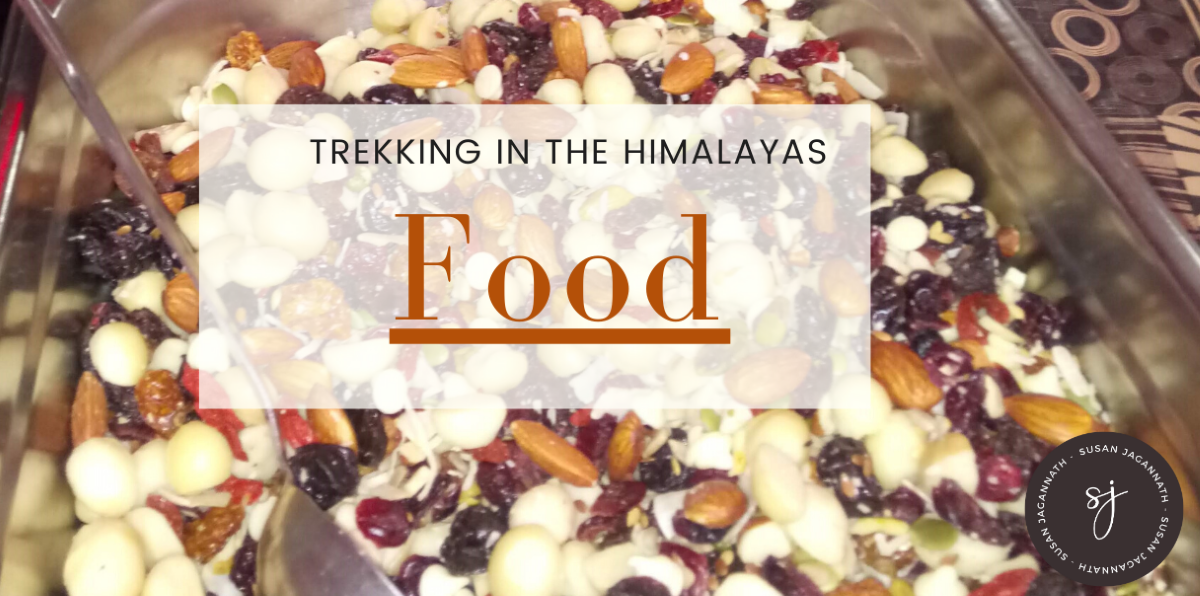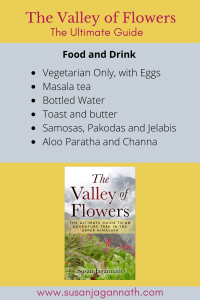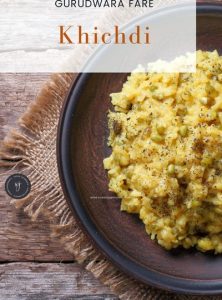
Delicious Food on a Himalayan trek
“Dhabas” or roadside food stalls serve generic Indian food on the Valley of Flowers route up to Ghangaria, and onto to Hemkund, and there’s simple free food at the gurudwaras, at guru ka langar.” One you are in the higher mountains, you may find that you have to eat vegetarian food, however, it is delicious, though limited, and there seemed to be little in the way of real local food. Be adventurous – Try to eat food that is freshly prepared rather than the odious 2-minute noodles.
Do carry hand sanitiser, and maintain a good distance from the vendor and other hikers while eating.
 Trail Mix
Trail Mix
We made trail mix, and divided it up into individual portions, one or two for each day. Carry protein bars, nuts or trail mix to supplement the food, as you may not feel hungry, despite the delicious food available. This way you avoid the inevitable cross-contamination.
A mix of nuts, dried fruits and seeds make a sustaining snack that give you a boost of energy. when you dont want to stop, or even don’t feel too hungry, and when climbing up to Hemkund, you need sustenance, and the altitude may suppress your appetite.
Water
The only water I would recommend is bottled water, and do remember to brush your teeth with it as well. If you don’t want to carry and drink bottled water, typically called “Bisleri” by its brand name, you will have to drink a lot of masala chai or tea, which is not a bad thing. There is no alcohol on sale in Ghangaria, but even if you carry it in, it is not advised at high altitudes. And Ghangaria is high altitude at 3000 odd metres.
At the end of a long day of trekking, there is nothing more delightful than hot pakodis and jelabis, washed down with steaming cups of tea. You can also get hot toast and butter in most restaurants in Ghangaria. While you can get free food, mostly khichdi, or a sort of risotto at the Gurudwaras, this spartan peasant fare can be topped off with gulab jamuns or hot jelabies from the dhabas outside. I also saw mounds of samosas stacked up and waiting for hungry pilgrims or trekkers.
Khichdi

Free food
At home we giggle over risotto and the gentrification of a plain peasant dish, that is the first food given to toddlers. But in the high mountains, that is its chief feature, easy to digest, and a healthy mix of protein, carbs and fats to give you energy on a long walk.
Which brings me to the last food that is ubiquitous on the trek, aloo paratha or kulcha, is flatbreads stuffed with a spicy potato mix, and served with a chickpea curry. On the first evening we relished it, but after a few days, it palled, so much so that I took to eating toast and jam.
It could also have had something to do with the mild attack of Delhi Belly. There is nothing quite as terrifying as an upset tummy on a trek. But it turned out that my fears were unfounded.
If you would like a few of the Himalayan recipes, they are a reader’s bonus, you will find the link in my latest book.
The book is pretty exciting too! Go read it and let me know, there are more food tales in it!
The Valley of Flowers, The Ultimate Guide to an Adventure Trek in the Upper Himalaya.
